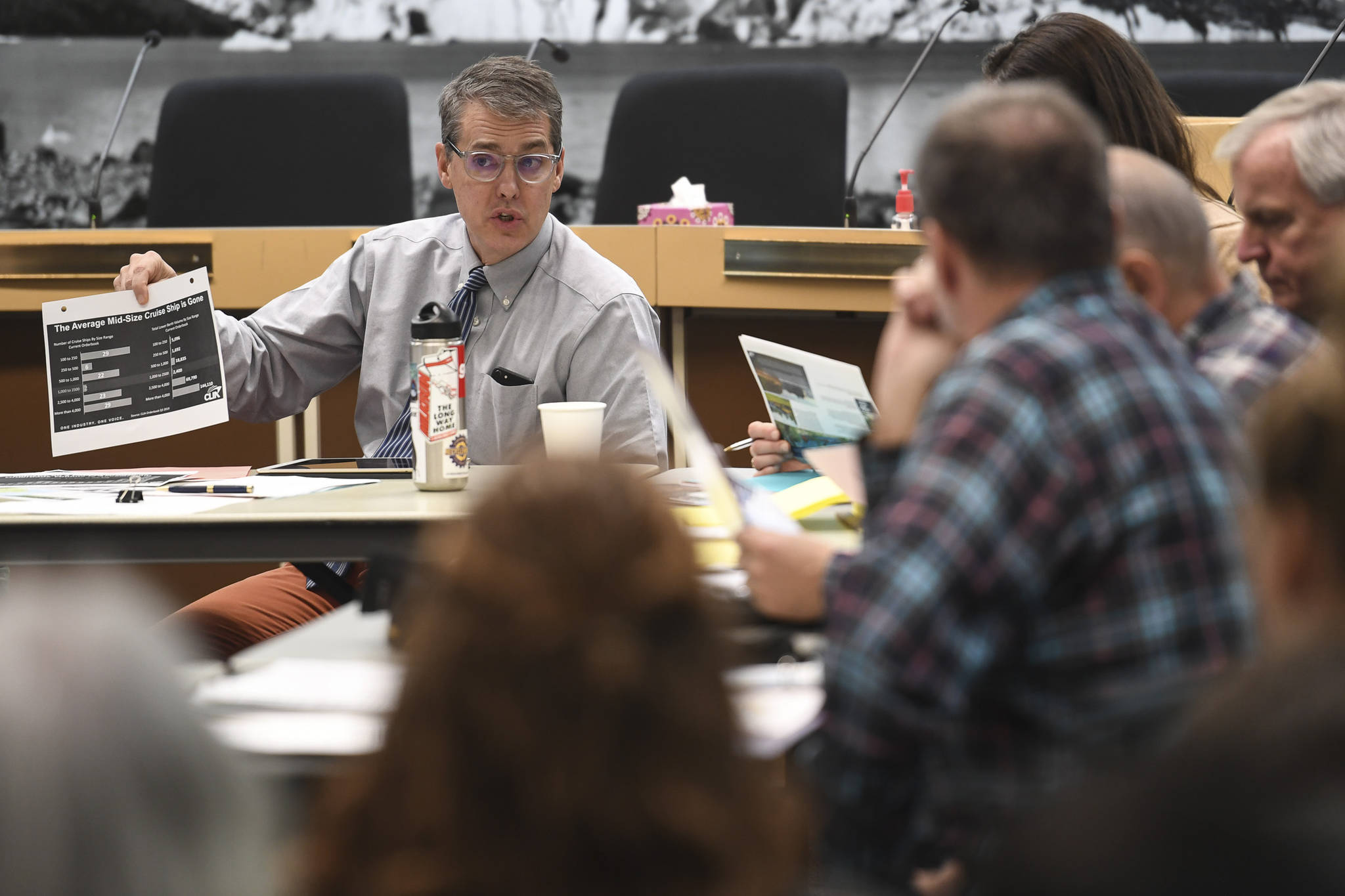In packed Assembly chambers at City Hall, the city’s Visitor Industry Task Force tried to get a handle on the ever-growing tourism industry.
The issue at hand was how the city will manage the influx of tourism expected to arrive in the coming years.
“There are a lot of ships on order,” said City Manager Rorie Watt, “and they are large.”
In its third meeting ever, and only the second substantial meeting according to Task Force Chair Carole Triem, the group looked at how the city had managed tourism in the past and how that might serve as a guide for the future.
“Past efforts show that we’ve been at a point where we thought mitigation was insufficient before,” said Michele Elfers, Deputy Director of Parks and Recreation for the City and Borough of Juneau. Elfers walked the Task Force through portions of the city’s Long Range Waterfront Plan, a technical document which gives an overview at how the city has approach tourism management in the past.
“It seems that we’re at that point again where we need to look at tourism more seriously,” Elfers said.
One of the words that is used repeatedly in the plan, Elfers said, was the word “balance.”
“The word balances comes out a lot, it’s a reoccurring theme,” Elfers said. “It also talks a lot about unifying the waterfront, about connectivity between the waterfront and downtown.”
Elfers told the task force to think of the Waterfront Plan as an infrastructure guide. However, she said, the plan did not discuss things like management, policy or maintenance issues.
Task force members talked about how to enhance the quality of life for Juneau residents while still accommodating the needs of the tourist industry, which is a major economic driver.
Meilani Schijvens of Rain Coast Data said she had worked on a number of studies related to the tourism industry, and that building infrastructure with locals in mind was a key element of achieving that balance.
“If you build for the tourists, the tourists are going to hate it,” Schijvens said. She said amenities built specifically for tourists often feel unauthentic and are usually disliked by visitors.
“But if you build for the locals, everyone is going to like it,” she said. “Sometimes if you go down to the waterfront, it’s all locals. We’re building a tourist industry that is for the locals and for the visitors.”
Yet there was still concern about the growth of the industry and the number of people coming to the city each year.
Paula Terrel, a community organizer and tourism industry critic, said the number of tourists was affect quality of life in Juneau.
“The ships are getting bigger, we’re getting more. If we don’t do something, it’ll just grow and grow,” she said. “There’s nothing to stop the cruise ship companies from coming with any volume they want.”
Assembly member Wade Bryson was wary of putting a cap on the number of tourists.
“There’s no way for us to pick a number, there’s nothing we can do to say this is the line (where no more tourists can come),” Bryson said. He was concerned that caps or other limitations on the tourism industry might disincentivize cruise ship companies from choosing Juneau as a destination.
“We also have to look at how much money is at stake,” Bryson said. “Every business in Juneau is tied to tourism.”
At the end of the meeting, Triem said she wanted to schedule additional meetings where members of the public could give comment.
“What I would want to hear is specific concerns,” Triem said. “The more specific, the more it helps with policy. I find it helpful when people have their specific points of friction.”
Two meetings were scheduled for public comment. On on Saturday, Jan. 11, at 10 a.m. and the other on Thursday Jan. 16, at 5:30 p.m. Both meetings will take place in Assembly chambers at Juneau City Hall.
• Contact reporter Peter Segall at 523-2228 or psegall@juneauempire.com.

